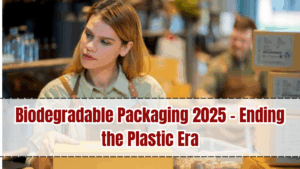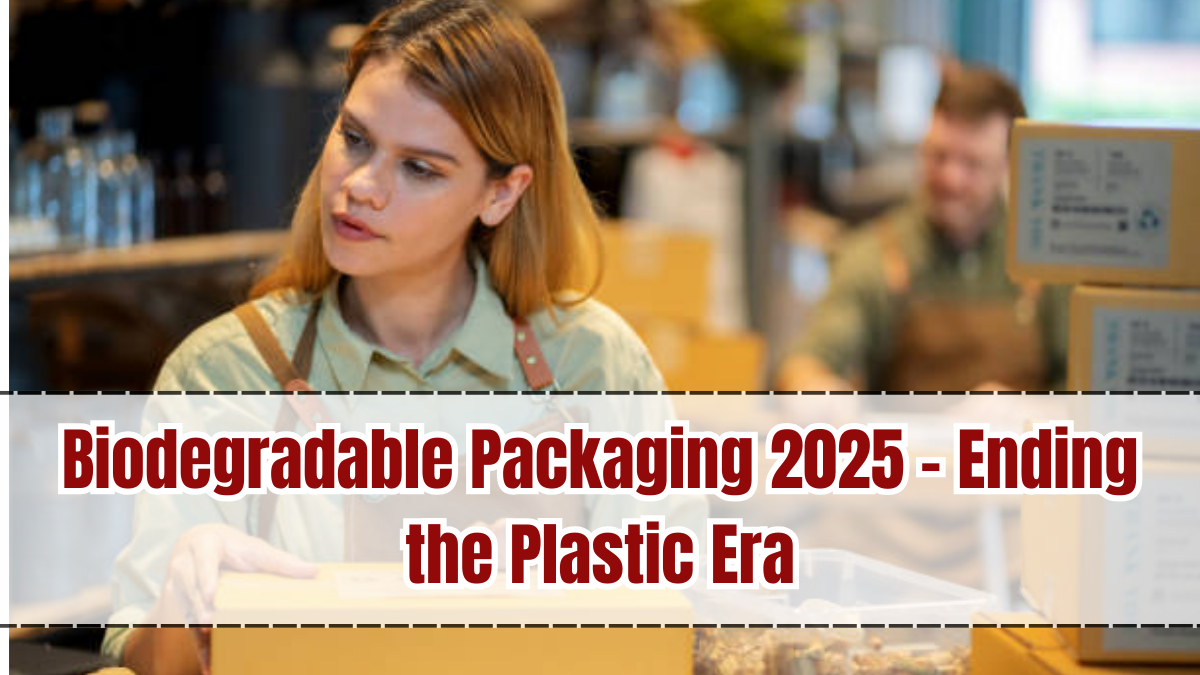Plastic pollution has become one of the most pressing global issues, threatening ecosystems, marine life, and even human health. With millions of tons of single-use plastic waste produced every year, governments, businesses, and consumers are seeking sustainable alternatives. In 2025, Biodegradable Packaging is emerging as a revolutionary step toward ending the plastic era. By using plant-based, compostable, and eco-friendly materials, industries are transforming packaging into a green and responsible solution.

What is Biodegradable Packaging?
Biodegradable packaging refers to materials that decompose naturally into non-toxic elements such as water, carbon dioxide, and organic matter. Unlike traditional plastics that can take hundreds of years to degrade, biodegradable packaging breaks down within months under the right conditions.
Common types of biodegradable packaging include:
-
Plant-based plastics (PLA) made from corn starch or sugarcane.
-
Compostable packaging that disintegrates in industrial composting facilities.
-
Edible packaging created from seaweed, rice, or potato starch.
-
Paper-based packaging coated with biodegradable films.
These innovations ensure that packaging no longer pollutes the planet after use.
Why Biodegradable Packaging Matters in 2025
The adoption of Biodegradable Packaging 2025 is critical for both the environment and human health.
-
Plastic Ban Regulations: Many countries have banned single-use plastics, pushing industries toward greener solutions.
-
Consumer Demand: Eco-conscious customers prefer brands with sustainable packaging.
-
Climate Goals: Reducing plastic waste helps achieve global carbon neutrality targets.
-
Marine Protection: Biodegradable materials prevent harm to aquatic life.
-
Circular Economy: Encourages recycling, composting, and reuse of natural resources.
This makes biodegradable packaging not just a trend but a global necessity.
Benefits of Biodegradable Packaging
Switching to biodegradable materials has wide-ranging benefits for businesses, consumers, and the planet:
-
Eco-Friendly: Reduces long-term pollution and landfill waste.
-
Safe for Health: Avoids harmful chemicals found in plastics.
-
Corporate Image: Brands adopting biodegradable packaging gain customer trust.
-
Economic Growth: Creates new industries and jobs in green manufacturing.
-
Compostability: Waste can be used as natural fertilizer for agriculture.
-
Compliance: Meets global regulations on sustainable packaging.
Role of Technology
Technology is driving the innovation behind biodegradable packaging 2025.
-
Nanotechnology improves the strength and durability of eco-friendly packaging.
-
3D printing allows customized biodegradable designs.
-
AI-driven supply chains ensure efficient distribution of green materials.
-
Biopolymer research creates stronger, cheaper, and faster-degrading materials.
-
Smart packaging integrates QR codes for traceability and recycling instructions.
This combination of science and sustainability is making biodegradable packaging mainstream.
Government and Private Sector Initiatives
Both governments and private companies are taking bold steps to encourage eco-friendly packaging. Key initiatives in 2025 include:
-
Government subsidies for biodegradable packaging industries.
-
Plastic tax policies penalizing single-use plastic producers.
-
Startup funding for green packaging innovators.
-
Retailer commitments where supermarkets shift entirely to eco-packaging.
-
International agreements aiming for plastic-free oceans by 2030.
Global brands in food, fashion, and e-commerce are leading the transition with large-scale adoption of biodegradable materials.
Future of Biodegradable Packaging
The future of biodegradable packaging looks transformative as industries continue to innovate. By 2030, experts predict:
-
100% plastic-free retail chains.
-
Edible packaging becoming common in restaurants and cafés.
-
Smart compost bins that recycle packaging into fertilizer at homes.
-
Global certification systems ensuring standard quality of biodegradable products.
-
Integration with circular economies where packaging is continuously reused or composted.
This future signals a complete shift from plastic dependency to eco-conscious living.
FAQs
What is Biodegradable Packaging 2025?
It refers to eco-friendly packaging materials that decompose naturally without polluting the environment, replacing harmful plastics.
Why is biodegradable packaging important?
It helps reduce plastic pollution, supports sustainability goals, and protects marine life and ecosystems from toxic waste.
What materials are used in biodegradable packaging?
Common materials include plant-based plastics (PLA), paper, compostable starch films, and edible materials like seaweed or rice.
Is biodegradable packaging affordable?
Yes, with mass production and government subsidies in 2025, costs have become competitive with traditional plastics.
What is the future of biodegradable packaging?
Future packaging will include edible wraps, smart composting solutions, and plastic-free retail ecosystems worldwide.
Click here to know more.
